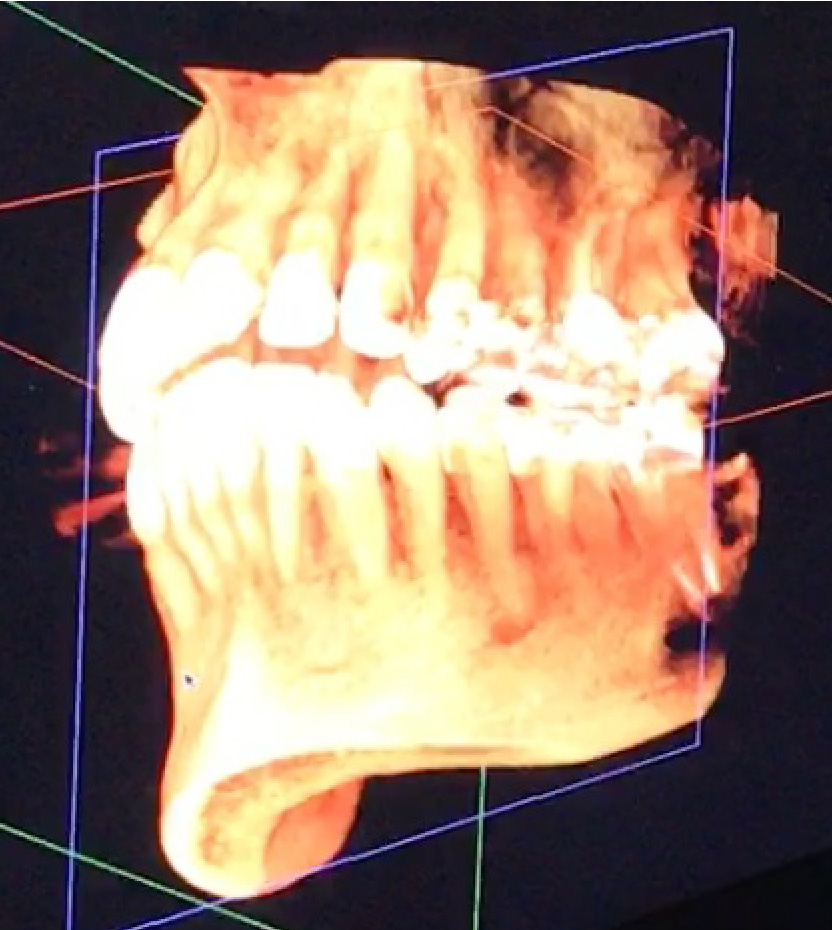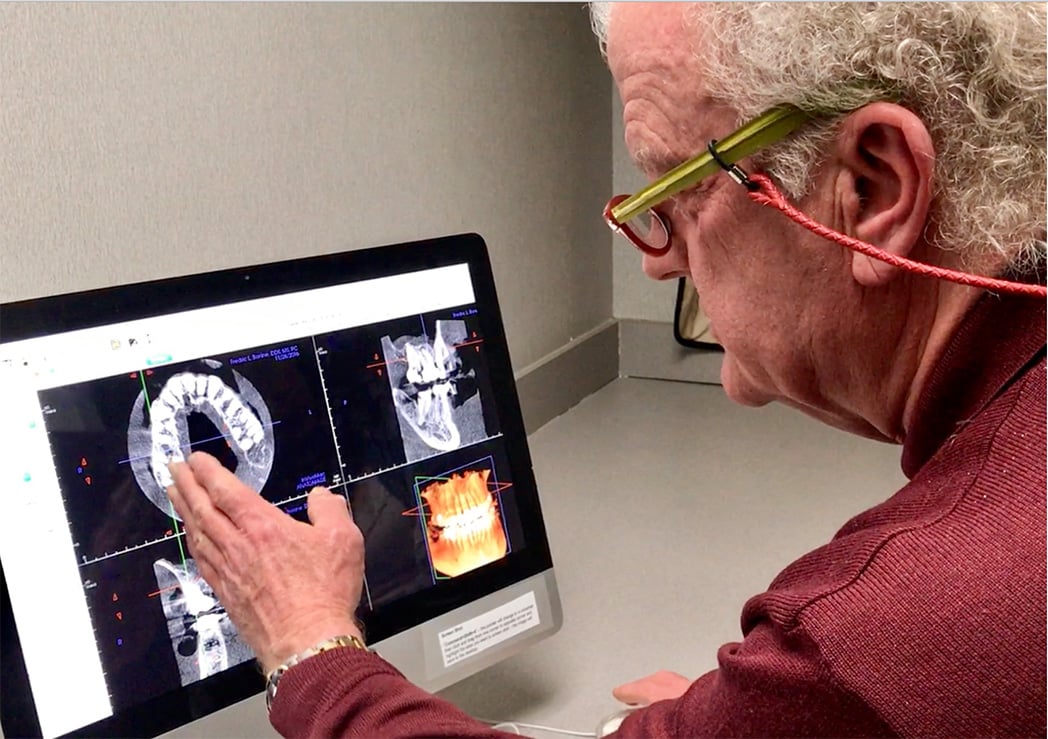 Cone Beam Radiographs provide a 3D model that can be manipulated to provide greater detail and traditional x-rays.
Cone Beam Radiographs provide a 3D model that can be manipulated to provide greater detail and traditional x-rays.
 Treatment plans are enhanced with Cone Beam technology which leads to a better outcome.
Treatment plans are enhanced with Cone Beam technology which leads to a better outcome.
The 3D Cone Beam image allows Dr. Bonine to see the hidden areas inside the oral cavity.
Cone Beam Computed Tomography
(CBCT or Cone Beam)
What is a Cone Beam?
A Cone Beam (CBCT) is a special type of x-ray that produces high resolution three dimensional (3-D) digital images of teeth, jaw and facial bones, soft tissues, and nerve pathways. Cone Beam scans penetrate the bone and soft tissue and reveal its hidden structure providing a picture of what lies beneath. It provides Dr. Bonine with incredibly detailed information about your oral health.
Cone Beam Images Provide Diagnostic Precision
The cone beam’s shaper images have a much higher resolution than traditional x-rays and provide a more detailed image of the patient’s mouth and allow for better diagnosis. For Dr. Bonine, it offers the ability to visualize what is inside the hidden and intricate structures inside the mouth––hard surfaces like jaw bones and teeth, and soft tissue like root canals, nerves, and sinuses. By contrast, conventional x-rays do not differentiate tissue and nerves.
How Does a Cone Beam Digital X-Ray Work?
A cone beam —an x-ray in the shape of a cone—moves or rotates around the patient’s head to produce a large number of high quality digital images. Then, a computer processes that information and creates a virtual three dimensional model of the area. That model can be rotated from side to side or up and down on a computer screen to be examined in greater detail—or in lesser detail—and can be manipulated in hundreds of ways to help the oral surgeon understand what the patient is experiencing. It enables the oral surgeon to visualize an area as large as the patient’s entire jaw or to focus on something as small as a single root canal inside a tooth.
Precise Treatment Planning
Cone Beam imaging technology has changed and enhanced the way we gather information, diagnose, and develop treatment plans. With greater detail and clarity, and with more views and angles that can be digitally manipulated, the oral surgeon can provide a better and more complete evaluation and diagnosis. Because of the accuracy of Cone Beam technology, a precise treatment plan can be created which lowers the chance of complications during or after the procedure and means a better outcome for the patient.
Better Outcomes for Patients
For patients, cone beam technology reduces the need for an invasive diagnostic surgical procedure, it shortens treatment time, and offers the chance for a better outcome. The patient also receives much less radiation compared to a traditional dental x-ray.
Cone Beam Technology Greatly Enhances the Following Procedures
- Treatment Planning
Evaluation of the jaw, sinus, nerve canals, and nasal cavity including determining bone structure and tooth orientation are greatly enhanced and form the foundation of the best treatment plan. - Pain Identification
Locating and pinpointing the origin of pain or pathology. - Dental Implants
Accurate placement of dental implants. Learn more about how Cone Beam technology greatly impacts dental implants. - Wisdom Teeth
Surgical planning for difficult impacted teeth. - Endodontics
Intricate procedures like complex root canals benefit from clearer visualization of the tooth’s anatomy. Finding hidden infections is easier. - Orthodontics
Providing accurate information on the position of the teeth and jaws helps determine exactly how and where teeth should be moved. - TMJ (Temporo-mandibular Joint Disorder)
The cone beam’s 3-D perspective helps oral surgeons better evaluate patient anatomy when diagnosing TMJ. - Oral Surgery
Treatment for tumors and impacted teeth is greatly enhanced by the level of detail in the scans - Tumors
Detecting, measuring and treating jaw tumors.
Risks
Dr. Bonine’s OP300 digital radiograph (Cone Beam) emits 10x LESS radiation than a traditional CT scan. It also features LDT Low Dose Technology™ to provide low dose scans for sensitive cases such as children, follow-up imaging, implant planning, or any other case where maximum resolution is not required.
